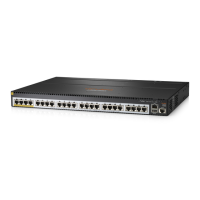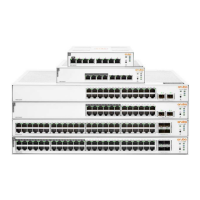105
1. Download the upgrade software image file.
2. (Optional.) Preload the Boot ROM image to the Boot ROM.
If a Boot ROM upgrade is required, you can perform this task to shorten the subsequent
upgrade time. This task helps avoid upgrade problems caused by unexpected electricity failure.
If you skip this task, the device upgrades the Boot ROM automatically when it upgrades the
startup software images.
The Boot ROM image preloaded into the Boot ROM does not affect the device running status.
3. Specify the image file as the startup software image file.
4. Reboot the entire IRF fabric.
5. Verify the upgrade.
Preparing for the upgrade
1. Use the display version command to verify the current Boot ROM image version and startup
software version.
2. Use the release notes for the upgrade software version to evaluate the upgrade impact on your
network and verify the following items:
Software and hardware compatibility.
Version and size of the upgrade software.
Compatibility of the upgrade software with the current Boot ROM image and startup
software image.
3. Use the dir command to verify that all IRF member devices have sufficient storage space for
the upgrade images. If the storage space is not sufficient, delete unused files by using the
delete command. For more information, see "Managing the file system."
4. Configure FTP or TFTP settings.
5. Use FTP or TFTP to download the upgrade image file to the root directory of a storage medium
on any one of the member devices.
For more information about FTP and TFTP, see "Configuring FTP" and "Configuring TFTP."
Preloading the Boot ROM image to Boot ROM
Load the upgrade Boot ROM
image to the Boot ROM.
bootrom update
file
file-url
slot
slot-number-list
Specify the downloaded software
image file for the file-url argument.
The new Boot ROM image takes
effect at a reboot.
Specifying startup images and completing the
upgrade
You can specify startup images for IRF member devices in bulk, or one by one.
Specifying startup images for all devices in bulk
Perform this task in user view.

